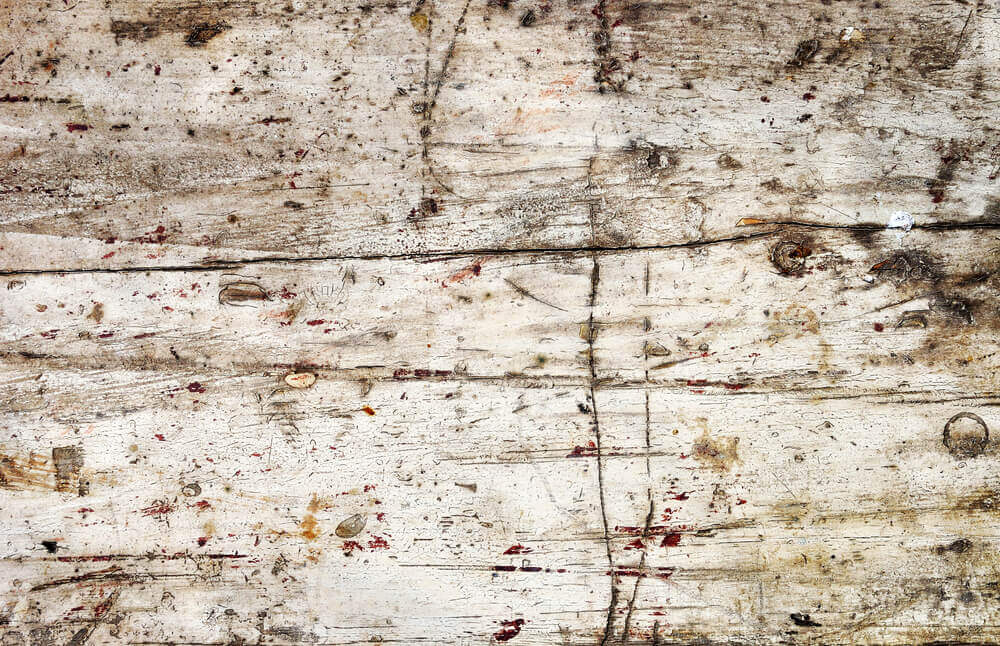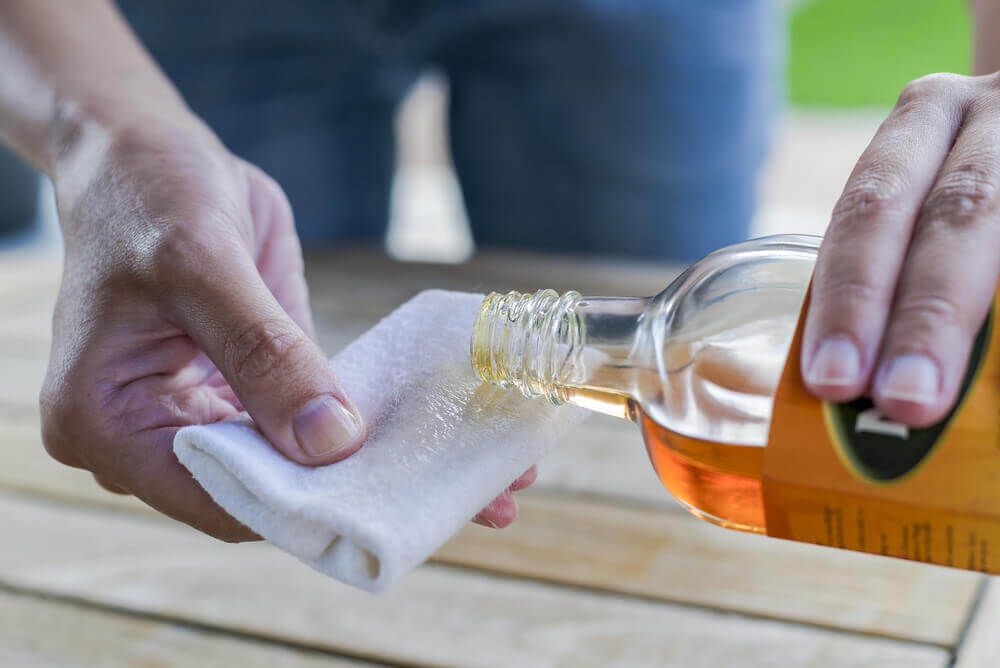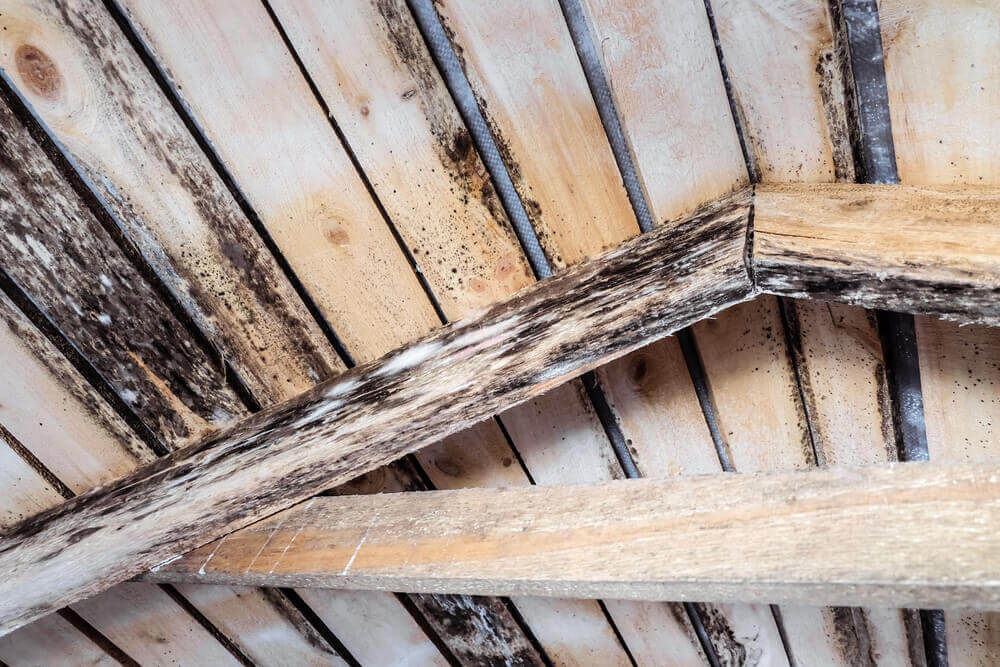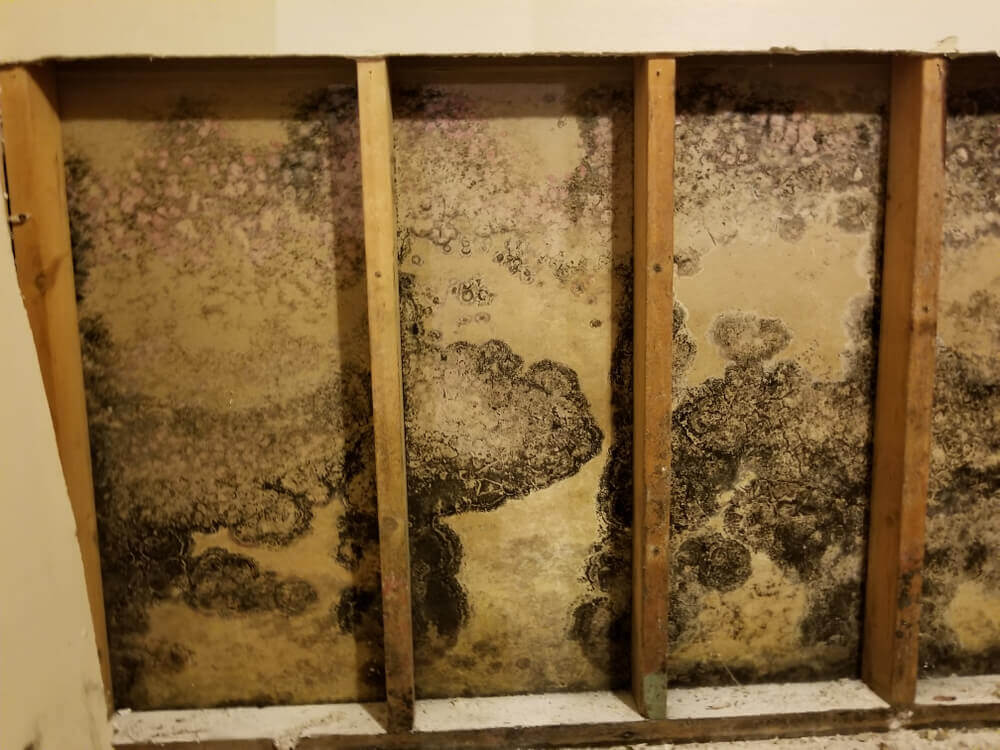Removing Mold From Wood

Mold and fungi are one of the biggest problems that can arise in furniture. They often result from humidity, dirt, the passing of time or simply from a lack of care. In light of this stubborn problem, today we want to show you how to remove mold from wood.
Furniture pieces in closed spaces are especially vulnerable targets; storage rooms or attics are classic examples. When mold affects wood, you’ll notice changes in its color, texture and of course, overall appearance.
You need to act fast as soon as you detect mold on your furniture. Treat it to protect the material and prevent the mold from reoccurring. Before you get started, make sure you read our tips below.
How does mold form?

Mold grows on any kind of surface: wood, fabric, plastic, etc. For the most part, it begins to form on areas that lack proper ventilation. These spaces are humid and poorly lit. It can even grow on walls.
While you might be familiar with certain chemical treatments and products that effectively treat mold, they risk damaging wood and its appearance. Here at DecorTips, our main goal is to remove mold without harming the material, maintaining it in good condition.
Periodical treatment is ideal for preventing mold from reappearing. But you might not always be aware of a piece of furniture that’s hidden away for a long period of time.
Pay attention to the physical condition of your furniture pieces.
Removing mold from wooden furniture in 3 steps

If you’d rather not use chemical products, you can try other effective solutions that won’t harm your home by releasing harmful fumes.
- A great example is cleaning the surface of your furniture as best you can with a damp rag. You might not believe it, but a damp rag can remove some surface stains and prepares the furniture for other cleaning solutions.
- One cleaning solution that works wonders is white vinegar with a few spoonfuls of chlorine. Make sure you mix them together well. Use a toothbrush to apply it to the furniture’s surface.
- Another cleaning solution you can try is soapy water. Rub the solution into the surface with a toothbrush. Then, we recommend following up with chlorine and rubbing it in well until no traces of mold are left.
After trying any of these methods, your wooden furniture will look much cleaner and fresher after drying. It might even look like new.
Removing mold from wood – extreme cases

If you are tackling an extreme case, you need to use a product that can treat your furniture fast. However, there’s a downside to using such products as they might damage the wood.
In certain cases, you can treat your wood by first sanding the surface to smooth it and remove surface mold. This is a crucial step before applying a disinfectant product.
Bleach is the choice product for fast elimination. However, it has risks as it can discolor the treated area. In light of possible discoloration, make sure to apply a sealant and some varnish after treating the mold to give your furniture a more natural appearance.
Only consider bleach for extreme cases.
Controlling humidity

Mold produces an off-putting odor. If it grows on furniture, mold can ruin it and spread the sickly smell. If you feel like you’re facing a no-win situation, consider the next option – replace your wooden furniture.
Holding on to a piece of furniture that sees reoccurring mold is pointless. You have to consider replacing it and controlling the humidity in your home as well as preparing it to withstand humidity.
In any case, checking up on your furniture and rooms from time to time is the best way to control mold. Prevention is the best solution; it’s the best path to a healthy home.
Mold and fungi are one of the biggest problems that can arise in furniture. They often result from humidity, dirt, the passing of time or simply from a lack of care. In light of this stubborn problem, today we want to show you how to remove mold from wood.
Furniture pieces in closed spaces are especially vulnerable targets; storage rooms or attics are classic examples. When mold affects wood, you’ll notice changes in its color, texture and of course, overall appearance.
You need to act fast as soon as you detect mold on your furniture. Treat it to protect the material and prevent the mold from reoccurring. Before you get started, make sure you read our tips below.
How does mold form?

Mold grows on any kind of surface: wood, fabric, plastic, etc. For the most part, it begins to form on areas that lack proper ventilation. These spaces are humid and poorly lit. It can even grow on walls.
While you might be familiar with certain chemical treatments and products that effectively treat mold, they risk damaging wood and its appearance. Here at DecorTips, our main goal is to remove mold without harming the material, maintaining it in good condition.
Periodical treatment is ideal for preventing mold from reappearing. But you might not always be aware of a piece of furniture that’s hidden away for a long period of time.
Pay attention to the physical condition of your furniture pieces.
Removing mold from wooden furniture in 3 steps

If you’d rather not use chemical products, you can try other effective solutions that won’t harm your home by releasing harmful fumes.
- A great example is cleaning the surface of your furniture as best you can with a damp rag. You might not believe it, but a damp rag can remove some surface stains and prepares the furniture for other cleaning solutions.
- One cleaning solution that works wonders is white vinegar with a few spoonfuls of chlorine. Make sure you mix them together well. Use a toothbrush to apply it to the furniture’s surface.
- Another cleaning solution you can try is soapy water. Rub the solution into the surface with a toothbrush. Then, we recommend following up with chlorine and rubbing it in well until no traces of mold are left.
After trying any of these methods, your wooden furniture will look much cleaner and fresher after drying. It might even look like new.
Removing mold from wood – extreme cases

If you are tackling an extreme case, you need to use a product that can treat your furniture fast. However, there’s a downside to using such products as they might damage the wood.
In certain cases, you can treat your wood by first sanding the surface to smooth it and remove surface mold. This is a crucial step before applying a disinfectant product.
Bleach is the choice product for fast elimination. However, it has risks as it can discolor the treated area. In light of possible discoloration, make sure to apply a sealant and some varnish after treating the mold to give your furniture a more natural appearance.
Only consider bleach for extreme cases.
Controlling humidity

Mold produces an off-putting odor. If it grows on furniture, mold can ruin it and spread the sickly smell. If you feel like you’re facing a no-win situation, consider the next option – replace your wooden furniture.
Holding on to a piece of furniture that sees reoccurring mold is pointless. You have to consider replacing it and controlling the humidity in your home as well as preparing it to withstand humidity.
In any case, checking up on your furniture and rooms from time to time is the best way to control mold. Prevention is the best solution; it’s the best path to a healthy home.
All cited sources were thoroughly reviewed by our team to ensure their quality, reliability, currency, and validity. The bibliography of this article was considered reliable and of academic or scientific accuracy.
- Barbado, José Luis: Consejos útiles para el hogar, Albatros, 2003.







